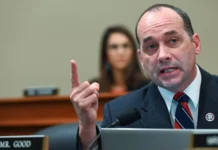
An Arizona prisoner made a last-minute request to the U.S. Supreme Court to delay his execution scheduled Wednesday for his murder conviction in the 1984 killing of an 8-year-old girl.
Frank Atwood made the request Tuesday after a lower court rejected his arguments that the execution should be called off because his degenerative spinal condition would make it excruciatingly painful for him to be strapped on his back to the gurney he will lie on during the lethal injection.
Atwood’s attorneys also told the Supreme Court in court filings that the aggravating factor that made his crime eligible for the death penalty was invalidly applied. He was convicted in 1975 in California for lewd and lascivious conduct with a child under 14 and convicted of killing Vicki Hoskinson in 1987.
Atwood is scheduled to be lethally injected with pentobarbital Wednesday at the state prison in Florence, Arizona, for his conviction in the girl’s killing.
The execution would be Arizona’s second in less than a month, following an eight-year hiatus attributed to both on the difficulty of obtaining needed lethal injection drugs and criticism that a 2014 execution was botched.
Death penalty opponents worry that Arizona will now start executing a steady stream of prisoners who have languished on death row, but state officials didn’t immediately respond to a request for comment on their future execution schedule and no more are currently scheduled. Arizona has 112 prisoners on death row, including Atwood.
Earlier on Tuesday, the 9th U.S. Circuit Court of Appeals rejected a request to delay Atwood’s execution.
In addition to arguing that Atwood would suffer while strapped to the gurney, his lawyers questioned whether the state had met a requirement that the lethal injection drug’s expiration date falls after the execution date.
And even though he didn’t pick lethal gas as his execution method, his lawyers still challenged the state’s procedures protocol for gas chamber executions.
The appeals court in its ruling said it was deferring to a lower-court judge who concluded that accommodations made by the state — allowing a pillow and tilting feature on the gurney to be used to prop up Atwood to alleviate his pain — prevented a ruling that the lethal injection protocol creates a risk of severe pain.
The appeals court also concluded Atwood lacks legal standing to challenge the lethal gas protocol because he will be executed by lethal injection.
Prosecutors have said Atwood is trying to indefinitely postpone his execution through legal maneuvers.
Atwood’s lawyers said would suffer for an extended amount of time even before the lethal drug is injected.
In a statement, Atwood attorney Joseph Perkovich said the lethal injection procedure will “intentionally inflict extreme pain for what will likely be an hour before, in the best-case scenario, he succumbs to the execution chemicals.”
Authorities have said Atwood kidnapped Hoskinson, whose remains were discovered in the desert northwest of Tucson nearly seven months after her disappearance. Experts could not determine the cause of death from the remains, according to court records.
Atwood maintains that he is innocent.
Last month, Atwood declined to choose between lethal injection or the gas chamber, leaving him to be put to death by lethal injection, the state’s default execution method.
Even though he didn’t pick the gas chamber, Atwood challenged Arizona’s lethal gas procedures.
His lawyers said Atwood has a right to choose between methods of execution that are constitutional and suggested that the state switch its lethal gas from hydrogen cyanide gas to nitrogen gas because nitrogen would produce painless deaths. Arizona prosecutors say nitrogen executions are “untried and untested.”
Atwood’s attorneys said the state’s lethal gas protocol calling for the use of hydrogen cyanide gas — which was used in some past U.S. executions and by Nazis to kill 865,000 Jews at the Auschwitz concentration camp alone — is unconstitutional and would produce agonizing levels of pain in executions.
Arizona, California, Missouri, and Wyoming are the only states with decades-old lethal-gas execution laws still on the books. Arizona, which carried out the last gas chamber execution in the United States more than two decades ago, is the only state with a working gas chamber.
In recent years, Oklahoma, Mississippi, and Alabama have passed laws allowing executions with nitrogen gas, at least in some circumstances, though experts say it’s never been done and no state has established a protocol that would allow it.
On May 11, Arizona executed Clarence Dixon for his murder conviction in the 1978 killing of Deana Bowdoin, a 21-year-old Arizona State University student.
It was the first execution carried out in the state since the July 2014 execution of Joseph Wood, who was given 15 doses of a two-drug combination over nearly two hours.
Wood snorted repeatedly and gasped before he died. His attorney said the execution had been botched.
Republished with the permission of The Associated Press.













